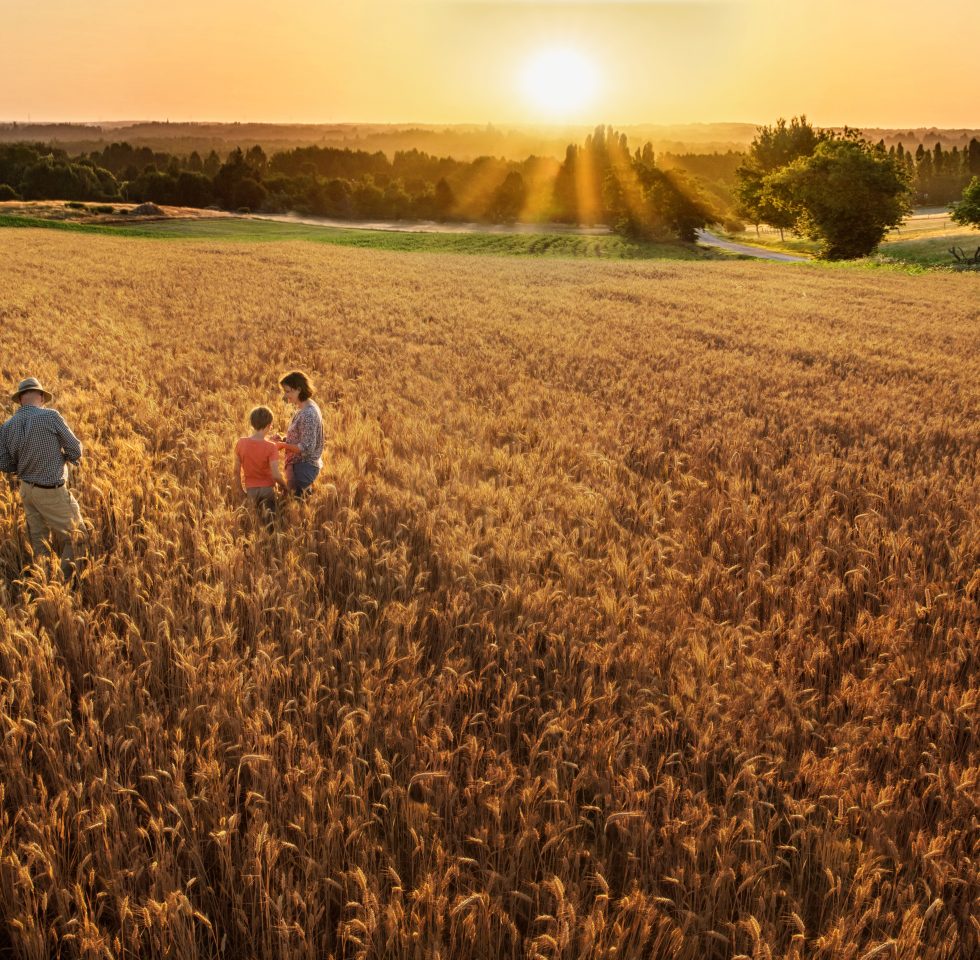How We Tackle Weeds in Organic Chickpeas
June 23, 2025We’re back in the field with our chickpea cultivation series! See how we tackle weeds after emergence using inter-row cultivation.
Read articleAgriculture is a significant contributor to climate change all over the world, but it can also do the opposite. Read how.

You’ve probably heard that New Zealand wants to tax farmers for their cows’ burps and farts. Of course, this is not to teach their cows good manners, but an environmental effort to decrease greenhouse emissions. Agriculture is a significant contributor to climate change all over the world, not just in New Zealand. So, if we take this more expansively, we can estimate that food systems as a whole (including land use, production, processing, distribution, consumption, and waste) are among the world’s largest polluters and generate one third of man-made greenhouse gas emissions. This isn’t the cows’ fault, but ours – which also means we can do something about it.
Agriculture is responsible for 55% of air pollution linked to human activities and is also a major source of greenhouse gas emissions (GHG). They have various sources, some smelly and some almost unnoticeable.
Let’s look at cows living in New Zealand first. Well, they and their relatives around the world produce methane when they digest their food. You cannot see or smell it, but this gas is about 20 times more powerful than carbon dioxide in its warming action. It’s a major short-term contributor to global warming because it persists in the atmosphere for a shorter time. Carbon dioxide on the other hand, stays in the air longer and is probably the most notorious GHG linked to global warming – but agriculture isn’t a big contributor. It produces only 1% of global emissions, mainly through the use of agricultural machinery. You usually can’t see it, but you can smell its faint, but sharp odor.
There is another GHG, which is part of natural processes, but nitrogen fertilizers used in agriculture give it a boost by leaching, volatilization, and runoff. It’s called nitrous oxide and it’s also produced through the decomposition of animals and crops. Additionally, it has another environmental impact. Its fumes combine in the air with emissions from vehicles, power plants, and other industrial processes and form tiny solid particles. Because they measure only 1/30 the width of a human hair, they can penetrate deep into lungs, causing heart or pulmonary disease. So, while you might not feel the effects of global warming in a very short time, what pollutes the atmosphere can have an immediate effect on your health. Air pollution is currently the 7th leading cause of premature death worldwide, being directly responsible for around 4 million deaths annually.
Plants absorb carbon dioxide from the atmosphere, so forests and other natural habitats store vast amounts of carbon – but there’s a limit to it. When we change the use of land this has a negative impact on the emission balance. When burning plants perform deforestation we produce GHG emissions. An opposite action – maintaining and planting trees – contributes to storing this gas and therefore reduces its concentration from the air we breathe.
As great advocates of landscaping and opponents of deforestation at LoginEKO, we began the process of planting perennial vegetation. This simple action directly contributes to the reduction of carbon dioxide in the atmosphere. We are using various tree species to create buffer zones next to our fields, which also provide a habitat for pollinators and birds besides reducing our carbon footprint.
Our models exclude animal fertilizers and we efficiently employ green manure – regarded as a clean energy source. Additionally, we have started monitoring GHG on multiple areas to measure the anticipated positive effect of transition to nature-friendly farming. According to the results, we will continue adapting agricultural practices towards sustainable food production. This IS possible and luckily we are not the only ones going in this direction.
In the Netherlands, they work on ‘No Shit Food’ – a new sustainable standard that works exclusively with organic vegetable fertilizers. They try to achieve climate neutral cultivation with smaller water use that also battles over-fertilization, salinization, and desertification. On the other side of the globe, China has built the biggest single-building pig farm in the world to meet the country’s demand for pork. It’s a 26-storey building with a capacity for 1.2 million pigs a year.
We can see that food production is going in very different directions. Which way forward should WE take?
***
Sources:
We’re back in the field with our chickpea cultivation series! See how we tackle weeds after emergence using inter-row cultivation.
Read articleTwo days, three farms, one shared goal: growing hemp more sustainably. Here’s what we learned and shared during our tour of Prekmurje.
Read articleChickpeas offer great potential for organic farming. Join us as we walk you through the essential steps of chickpea cultivation, starting with seedbed preparation.
Read article